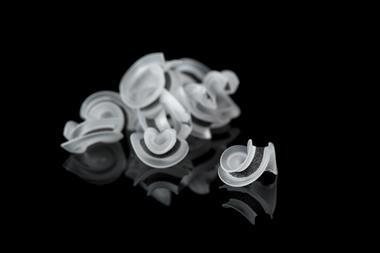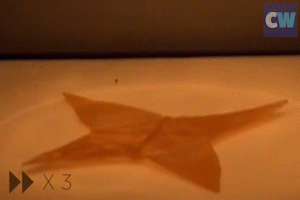Compression stockings could gain a massage function thanks to stress-memory polymers
Scientists in Hong Kong have unveiled the stress-memory behaviour of polyurethane fibres, and are using them to develop compression stockings that, for the first time, also massage the leg.
After deforming, triggers such as heat or light return shape memory polymers to their original shape. In a similar vein, stress memory polymers can store stress, which is retrieved by heating.

The textiles industry has used polyurethane for decades. It’s cheap, non-toxic and easily processed into fibres, which makes it an ideal candidate for making stress-memory fibres for specialised hosiery that prevents venous disorders.
A team led by Jinlian Hu from the Hong Kong Polytechnic University is the first to study stress-memory polymers at the fibre level. They made both polymeric fibres and films from semi-crystalline segmented polyurethane using a melt spinning method, and compared how they responded to different levels of strain and temperature. They discovered that with higher strain and temperature comes a greater stress memory.
Importantly, the fibres give a higher stress response than the films. The team determined that this is because melt spinning induces perfect crystallisation and ordered polymer packing in the fibres.
This behaviour means that these fibres have great potential for use in compression stockings. For efficient compression therapy, stockings need to maintain a certain level of pressure to aid circulation in the veins. The team demonstrated that their stress-memory polymeric fibres can provide this pressure, and may also provide a heat-triggered massage.
‘There are many studies of materials properties with little real thought to where there is a need, whereas this work really shows how working to solve a real problem can lead to fundamental understanding of materials properties,’ remarks David Haddleton, a polymer chemist at the University of Warwick, UK.
At present, nylon is used to make compression stockings, with cotton or polyester covered spandex yarns as the elastic material. The problem with these, explains team member Harishkumar Narayana, is that ‘the elasticity of the spandex yarns generates the interfacial pressure and it drops over time’. Also, current compression stockings do not provide any massage effect. ‘Especially for older patients who have limited mobility and calf muscle function, a massage effect is needed to push the venous blood,’ Narayana adds.
Simply changing the temperature controls the pressure of these new compression stockings. Currently they work around 40–50°C, but the group now aims to optimise the stress-memory fibres to trigger at human body temperature.
References
This article is free to access until 10 April 2017
H Narayana et al, J. Mater. Chem. B, 2017, DOI: 10.1039/c6tb03354g












No comments yet